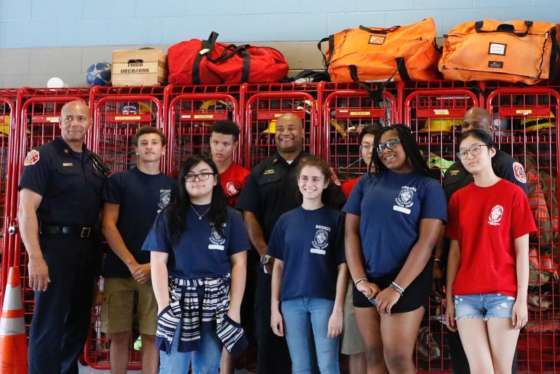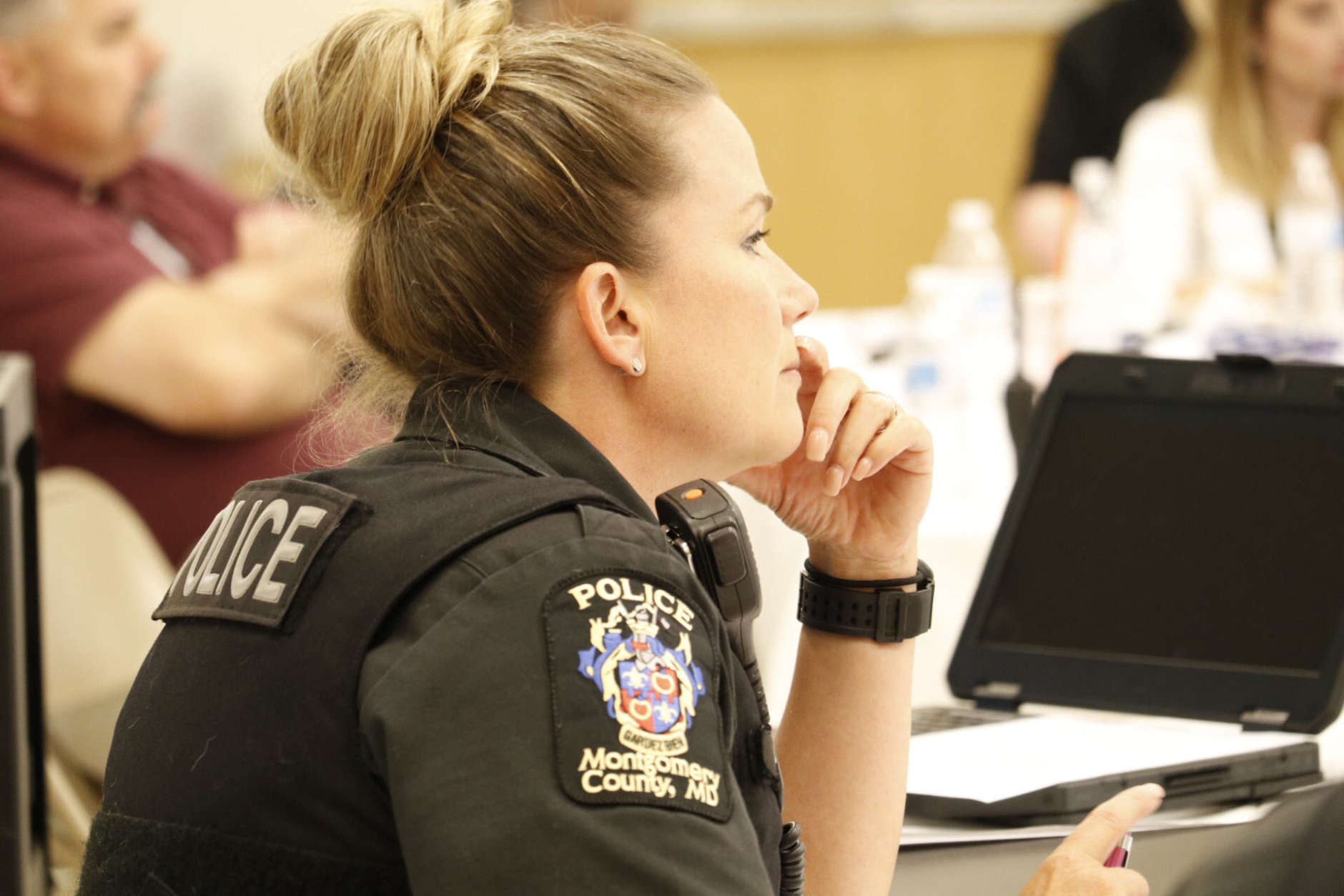
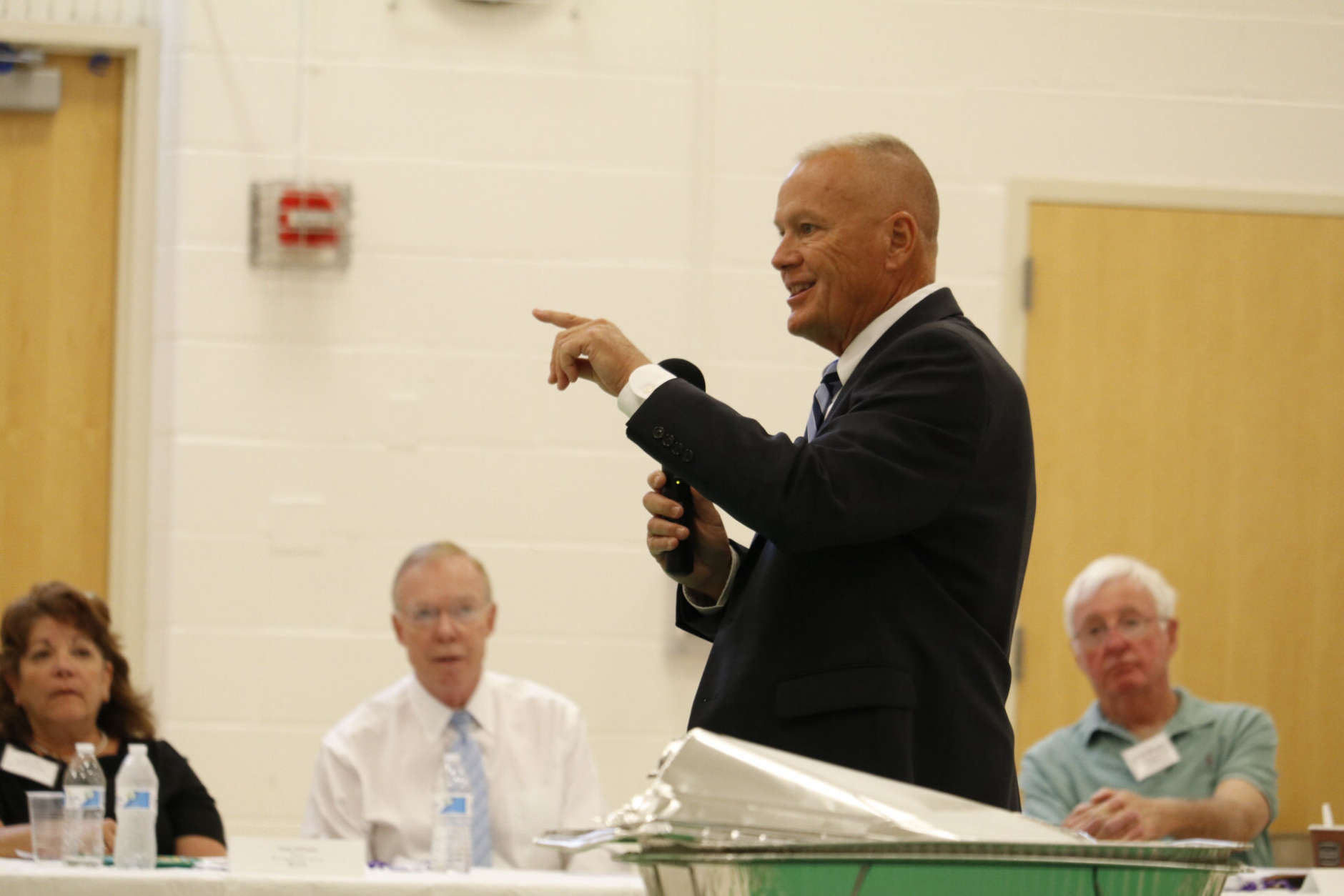
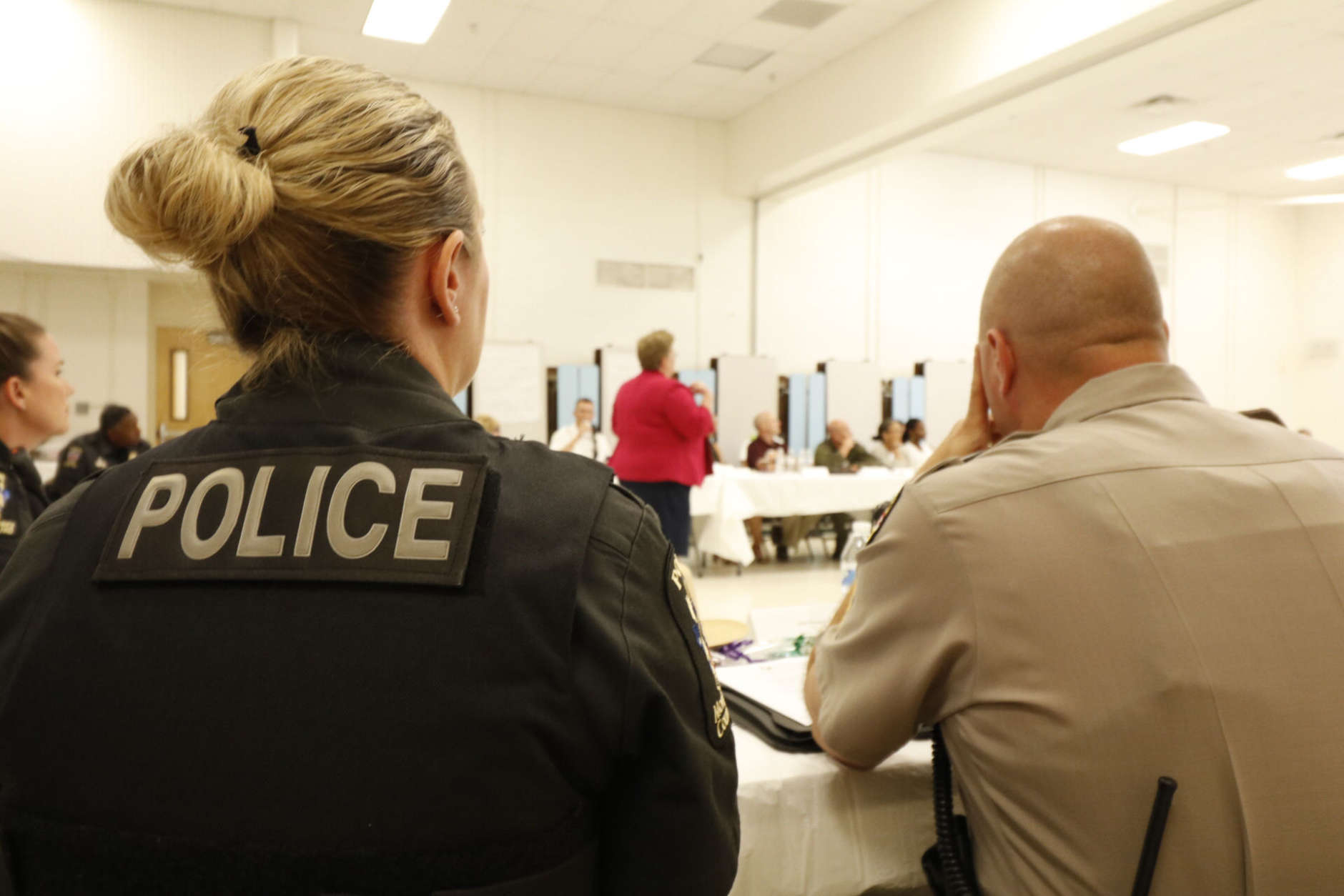
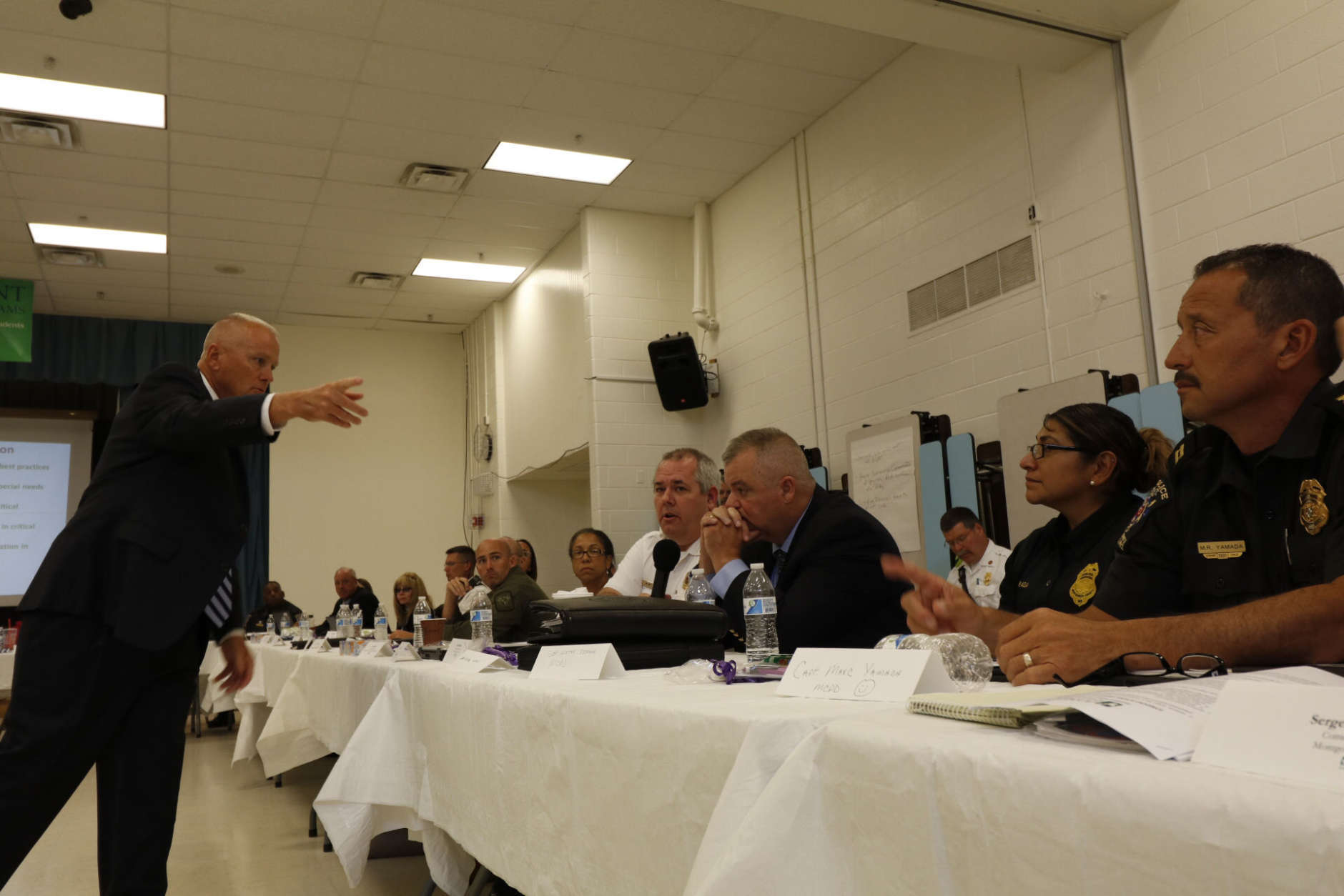
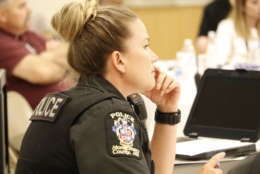
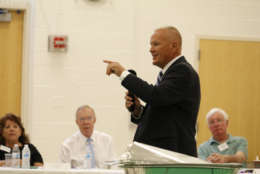
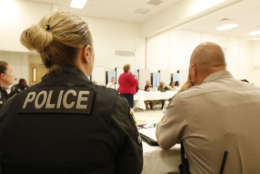
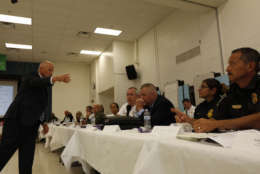
ROCKVILLE, Md. — Police and firefighters flocked to a school in Rockville, Maryland, but they weren’t responding to an emergency. They were meeting with school and community leaders at the Ivymount School to plan for one.
First responders attended a roundtable Wednesday on how to improve safety plans for everything from active shooters to fires.
At the Ivymount School, students’ reactions could vary in an emergency, says Janet Wintrol, CEO of the Ivymount Corporation. The private school serves students with a range of disabilities: Many students are on the autism spectrum, others use wheelchairs, and all have specialized learning plans tailored to their needs.
So teachers and first responders have to plan for those different reactions.
“When they are upset, students can get anxious, they can drop to the ground, they might not follow directions, they might not understand directions,” she said.
Wintrol said other concerns include how to deal with the latest directives from many first responders: The new “Run. Hide. Fight.” campaign from many police agencies means schools need to review how they’re training their staff.
“That’s what concerns me the most,” Wintrol said. “You don’t want chaos. So I don’t want one teacher saying ‘Run!’ and another teacher saying ‘Shelter!'”
The forum allowed teachers and first responders to talk about current plans and close possible gaps.
Ed Clarke, executive director for the Maryland Center for School Safety, understands Wintrol’s concerns. “We have to be careful if we’re going to come up with new strategies or options. So we have to make sure everybody’s trained and also to keep our parent community informed.”
Clarke’s son, Officer Ed Clarke, is a member of the Montgomery County Police Department’s SWAT team. He says he is aware that the appearance of a SWAT team member can be scary to anyone, especially to a child.
“We’re going to be wearing heavy vests, we’re going to be wearing helmets, we’re probably going to have a longer gun — it’s just not going to be the same as a regular officer.”
He says it’s important that students can identify his team members as helpers. “We’re there in bad scenarios, bad situations, and they don’t know that we’re still the good guys — we’re there to help.”
Joseph Pignatero, who works with Clarke as a planner and trainer, has some advice for parents when emergencies do occur.
“Let the professionals get in there and take care of your children. The schools all have rally points and alternative locations that your children will be taken to — please go there.”
Pignatero says he recognizes it’s easier said then done. As a parent, he says, he’d also be fighting the same impulse to race to a school in a crisis.
“Your educators, your professionals, are prepared,” he said.
Maryland State Fire Marshal Brian Geraci also attended the roundtable where firefighters emphasized that while a school lockdown can help keep an active shooter at bay, different strategies apply for fires.
Geraci explained that evacuation procedures are especially critical at schools like Ivymount, where students have physical disabilities.
“That’s who we continue to lose in fires in Maryland: the very young, the very old and those with disabilities and who cannot escape in a timely fashion,” Geraci said.
Officer Laurie Reyes with Montgomery County police coordinates the department’s Autism and Intellectual and Developmental Disabilities Outreach program. She’s excited to be able to work with school officials on how police can work with them to enhance safety plans.
“The bottom line is we want a positive, effective, safe interaction.”

